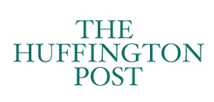The popularity of esports has grown exponentially in recent times. Now recognized as a professional sport, global audience figures are at 443 million and counting, and the esports industry is valued at over $100 billion.
Competitions are getting bigger and bigger with massive events, huge prizes, and an influx of major sponsorship deals. Combine this growth with the fact that these PC games are delivered through digital platforms, and it’s easy to see why esports tournaments and players are prime targets for hackers.
Here are three major esports risk factors and a few simple ways to mitigate the risk.
DDoS Attacks
Distributed denial of service (DDoS) attacks occur when a computer or network becomes overwhelmed, creating a disruption in the service provided by the esports host. DDoS attacks result in game latency; when players need to make split-second decisions, this can mean the difference between winning and losing thousands or even millions of dollars.
Even the industry’s big hitters have been targeted. In April 2020, EA Sports’ servers were taken offline by a large-scale DDoS attack, leaving players unable to access their accounts or connect to online modes in games such as FIFA 2020 and Apex Legends.
Ransomware
Gamers don’t usually think twice about entering personal details and payment information when setting up accounts on online gaming platforms, such as Steam and EA Origins. With so much sensitive data in storage, these platforms are a cybercriminal’s dream.
In 2017, hackers accessed the E-Sports Entertainment Association League’s (ESEA) database and held 1.5 million user’s accounts to a ransom of $100,000. ESEA refused to pay, advising its customers to change their passwords while it attempted to patch the breach. Unfortunately, the hackers proved they weren’t bluffing and released the data which included names, gaming IDs, and phone numbers.
Vulnerable Game Servers
Distributors try to patch server security flaws as soon as possible, but this can only happen if they are aware of the vulnerability. With criminals constantly creating new hacks, it’s difficult for companies to keep up. For esports players, this means there is always a risk when using their services.
Mid 2019 saw researcher Vasily Kravats identify a vulnerability in Steam that had the potential to leave 96 million Windows users at risk of having their computers highjacked. Steam’s owner, Valve, dismissed the claim as a non-threat so Kravats took to Twitter to reveal the vulnerability. Bug hunters provide a service to esports players that developers and platform owners need to heed.
Cybersecurity Precautions
Gaming platforms and developers spend thousands on cybersecurity measures but there are also simple steps that esports players and fans can take to help protect themselves.
Use a VPN
A VPN is not just a tool to help protect your internet privacy. By encrypting data and sending it through multiple servers, a player’s IP address remains shielded, protecting their internet connection from being targeted by hackers. A simple VPN download is the key to playing and watching esports safely and securely.
Install Anti-Virus Software
Good anti-virus software uses bot signatures and reports detailing existing malware to prevent a computer from becoming infected. Reputable companies including Avast, McAfee, and Panda offer software and apps to monitor your internet connection. So, whether you’re using a desktop, Mac, or Android device, malicious files are prevented from opening.
Protect Your Device
Whatever device you use to play or view esports, always be sure to have the most up-to-date software installed for both the operating system and any gaming software. New cyber threats are continually being discovered so developers provide updates to fix known vulnerabilities. And secure your device and online accounts with multi-factor authentication where possible.
As the esports industry continues to grow, cybercriminals will find new and ingenious ways to steal information and extort money from companies and individual gamers. By taking a few simple precautions, you can protect your online activity and safely immerse yourself in the esports gaming world.







Leave a Reply
You must be logged in to post a comment.